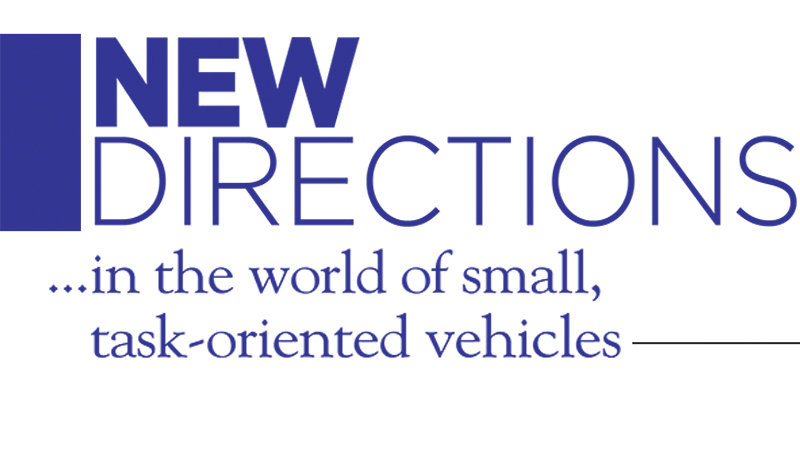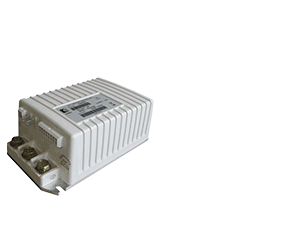If ever the trademark for this column, “New Directions” suited the times and the subject of small, task-oriented vehicles, it is certainly now. Here are the reasons.
In a new study on the small, task-oriented vehicle (STOV) market in the United States and Canada–the 10th in a biennial series published since 2000–Small Vehicle Resource (SVR), LLC describes an industry in midstream transition driven by:
- Climate policies, including zero emissions objectives, COVID-19 effects, and new technologies, which usher in the urban/suburban mobility (USM) market and underpin an expanding consumer market for personal transportation vehicles, as well as commercial markets for light duty utility vehicles;
- The on-going transition from lead acid to lithium batteries will have a major positive impact, raising vehicle performance levels and augmenting vehicle longevity and recycling value;
- The maturing off-road utility and recreational UTV market remains fundamentally strong and highly competitive, and is poised to follow the automobile market and golf-car type vehicles into electrification—either because of market demands or tightened restrictions of ICE-powered vehicles.
These factors, along with a strong traditional market, will put the industry on a 11% growth path for PTVs and slightly higher for light duty utility vehicles. Light duty utility vehicles have a major opportunity as a last-mile delivery vehicle. PTVs and LDUs will be largely electric. The industry and markets move from golf-centric to a more broad-based “mobility-centric” market. The off-road UTV market will also see more moderate growth, but remain an important segment of the STOV marketplace.
The “Dispersed Living Lifestyle”: Phase I – Rush to leave the city
Stories multiply from around the country that residents of major cities and municipalities are leaving in droves for the suburbs and further out to the countryside. In droves? An exaggeration? Perhaps, but the term was picked up from a guest on a radio talk show sponsored by the National Association of Realtors. The guest was emphatic that suburban real estate sales were booming across the country.
As a specific example, in an article published on the website, “Affluent Investor” cited trends in San Francisco. The articles author, Jerry Bowyer, states, “…people, especially wealthy people, seem to be rushing out of the city.” He references and quotes a local newspaper story reporting the trends in real estate in the distant exurbs of San Francisco in comparison with the central metro area:
“Amid the depths of a global pandemic and financial downturn, the demand for real estate is unexpectedly rocketing in wealthy regions outside San Francisco, reports Bloomberg. Agents say that demand is soaring in affluent areas around the Bay Area such as Napa, Marin and further afield in Carmel, as people who have the means look to get away from the city. Meanwhile, the market in San Francisco and Alameda County is still well below where it was last year.”
Of course, the wealthy are the most mobile in society, so they are making the first move, but this is only Phase I of what is likely to become an urban diaspora involving a much broader segment of the economic spectrum.
The “Dispersed Living Lifestyle”: Phase 2 – Virtual systems technology, the new reality
When we use the adjective “virtual” what is usually implied is an emulation of what is really real. We think of the holodeck of Star Trek fame. But, no, in this age what is facilitated via virtual technology actually is the reality. Again, citing the Bowyer article, “The shut-down has created a gigantic experiment in working from home. Zoom, Slack, Skype and various other distance communication/collaboration tools have now been purchased, downloaded, learned and for many are on the verge of becoming second nature.”
Please note that I love to quote articles and cite data which corroborate the thesis of dispersed living which underlies our newly published market research analysis referenced above. Moreover, I have been signaling this trend even before the pandemic crisis, noting that the gated community could well be the prototype for a widely accepted residential lifestyle—not only for retirees, but for a much younger demographic.
The “Dispersed Living Lifestyle”: Phase 3 – Twilight of the mass transit solution
Prior to the pandemic the hue and cry of city and municipal transportation planners, in efforts to meet the goals of reducing their urban carbon footprint, touted the mass transit solution, thereby dramatically reducing the use of individually -owned automobiles. Now in the pandemic crisis we currently face, and as structural precautions are put in place to avoid the contagion of future pandemics, the concept of mass transit—meaning masses of riders crowded together—hardly offers the panacea it once did.
The concept of shared ridership, however, is still viable, but mainly applicable to the dispersed living lifestyle of small, self-contained communities of clustered residences—but communities which are relatively widely dispersed. Yes, much like The Villages in Florida, Peachtree City in Georgia, and the Sun City developments around the country. In such an environment, ride-sharing conveyances, sanitized and appropriately outfitted (e.g. plastic shields between riders), would work well. Just such vehicles are currently being field-tested in Columbus, Ohio and pictured above.
Nuro-type vehicles will also be used to remotely order household items, such as groceries. The Nuro vehicle pictured to the left is remotely guided and is self-driving.
Clearly the technologies embodied in these two vehicle examples will enhance the viability and the attractiveness of the dispersed living lifestyle. And it should be noted that all the technologies involved are close at hand and being rapidly integrated into end-use products.
These kinds of mobile innovations will usher in a significant opportunity for small vehicle manufacturers, such as Club Car, E-Z-GO, Yamaha, Columbia Par Car, as well as imports.
The “Dispersed Living Lifestyle”: Phase 4 – Timeframe for widespread emergence of dispersed living lifestyles and the urban/suburban mobility (USM) market
It is often said that timing is everything, and so in evaluating the opportunities for small vehicle manufacturers in the environment of dispersed living, a key question is, when will the market take off? Corporate strategic planners in the above mentioned companies are, or will be soon, asking this question. Two of the most ubiquitous technologies of today, the desktop (or laptop) computer and containerization had their beginnings in roughly the mid- to late 70s, but it took a decade or more, into the 90s, for these innovations to achieve widespread use and a global market size and impact. Will the same be true for urban/suburban mobility market development?
My answer to that question is an emphatic, “No.” In a very insightful article from the TechCrunch, a technology newsletter, three reasons are cited as to why this market, and other technology-driven markets, will see rapid development. As the article states:
“There are three key drivers behind this rapid acceleration in the dispersion of business models:
- Local exceptions notwithstanding, human needs are often universal, and technology is therefore applicable across the globe.
- The internet enables the easy dissemination of information about new tech trends — TechCrunch is universally accessible to entrepreneurs.
- The rapid growth of mobile device adoption is a powerful platform for global rollouts.”
In a similar vein, we at SVR are forecasting the rapid development of the USM market, and foresee it unfolding in a major way throughout the five-year forecast to 2025 feature in our new market study. You can access the full TechCrunch article and it’s well worth reading.
The article concludes with this telling point, with which I fully concur: “For businesses expanding into high-growth markets, the implication of this trend is clear: While there’s a big opportunity, you must move fast.”
In particular, if the traditional golf car manufacturers hesitate, the vacuum of created by a lack of strategy and purpose will quickly be filled by entrepreneurial startups and their financial backers.




















